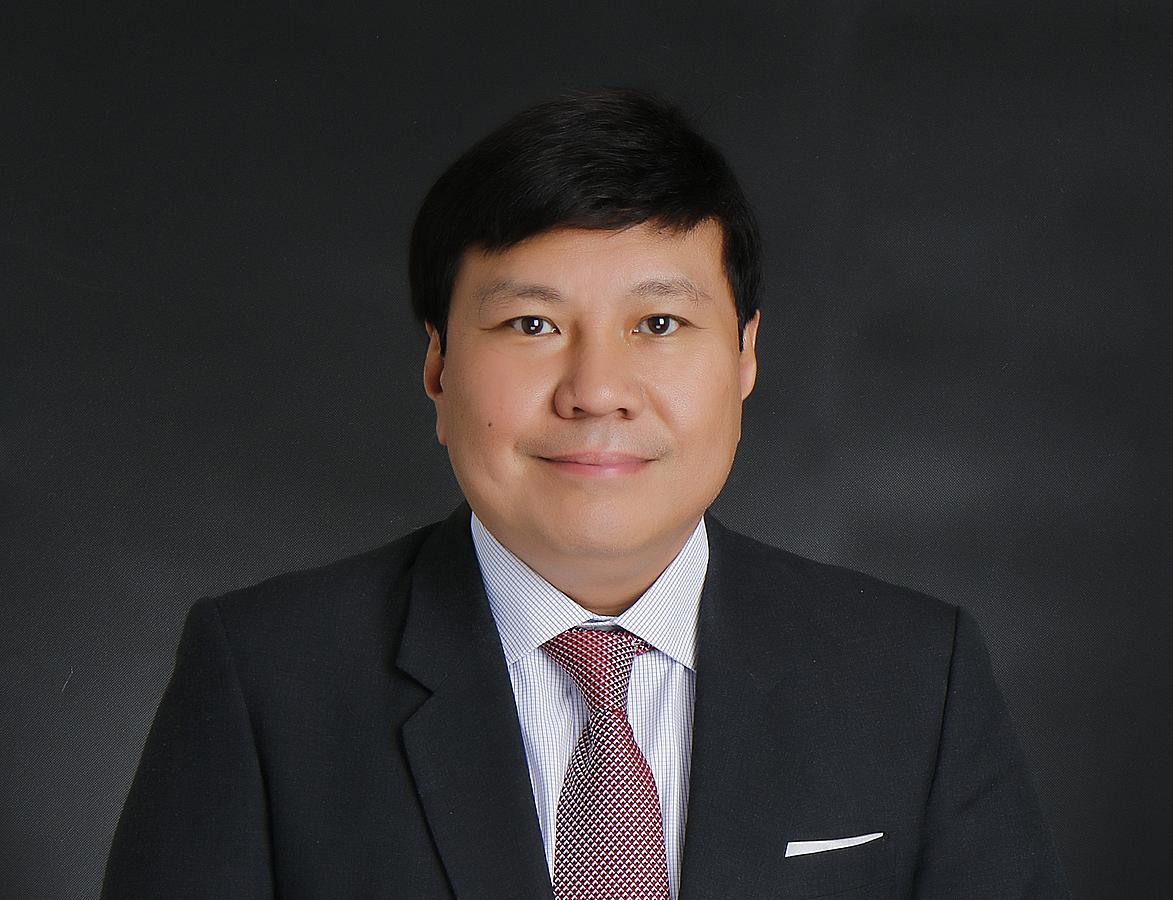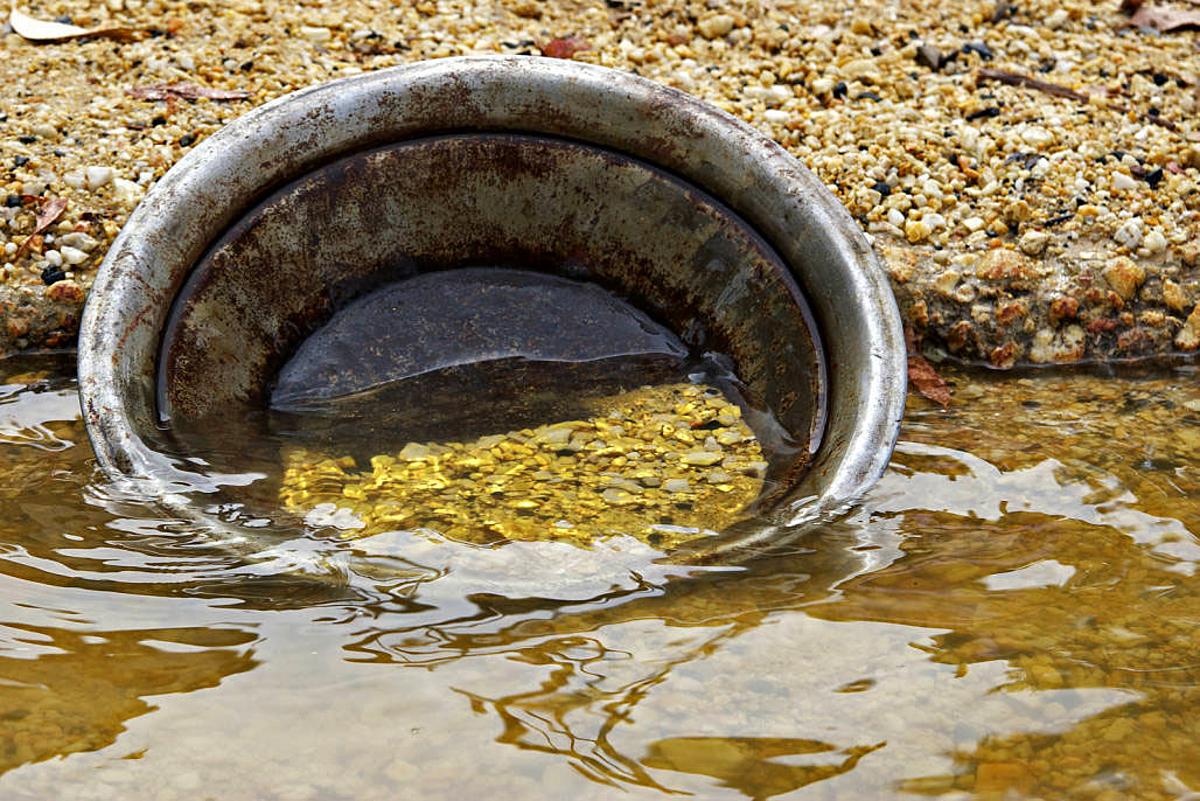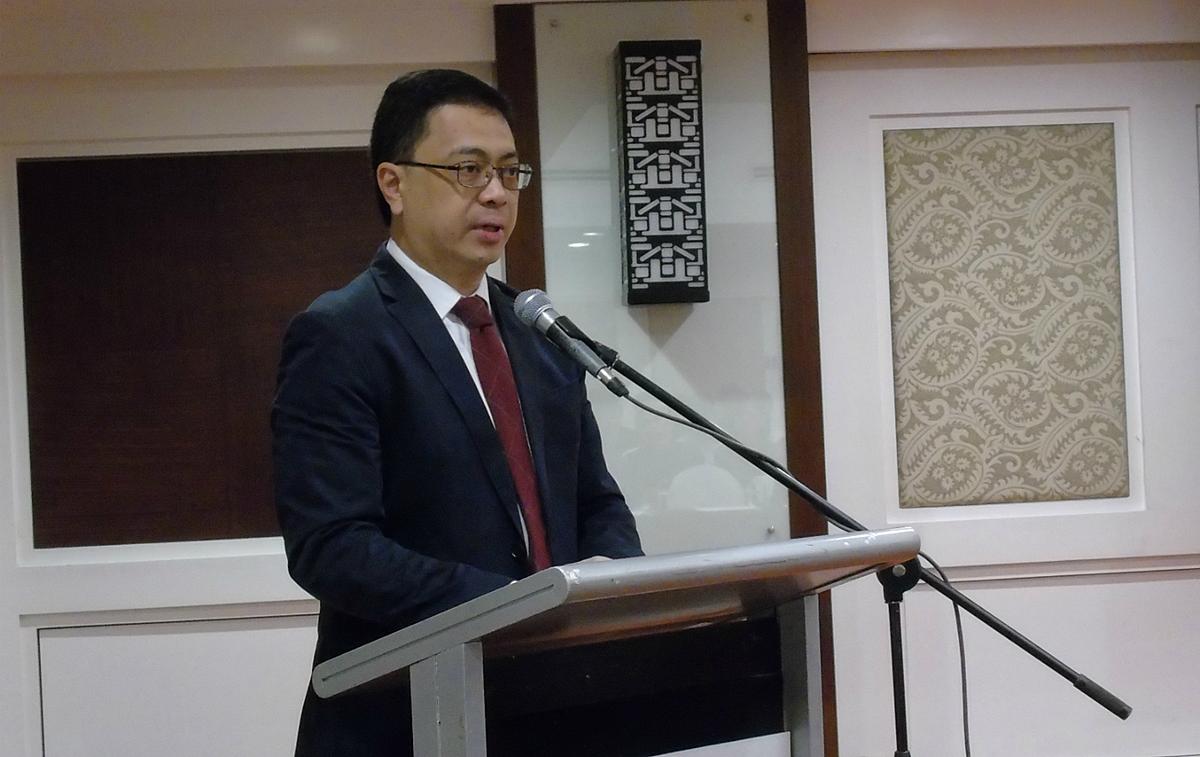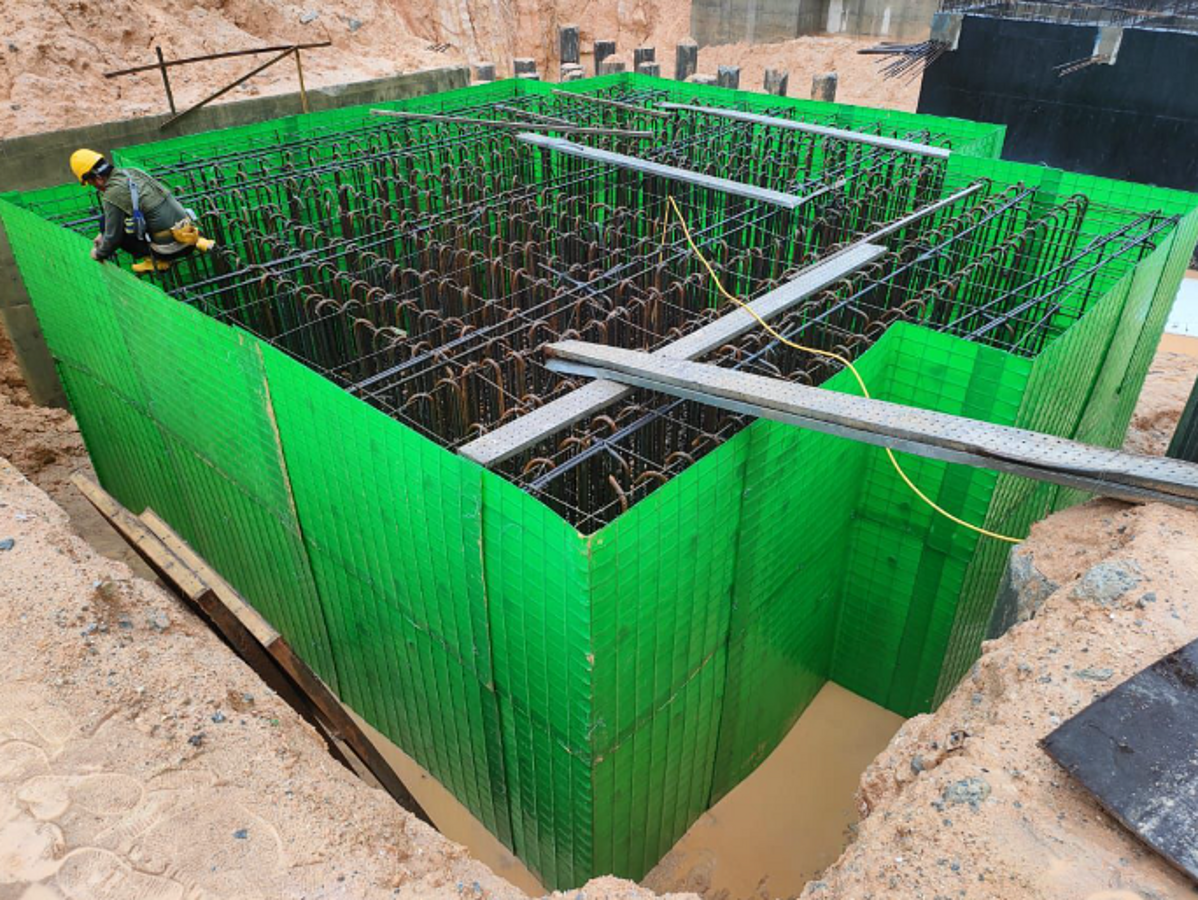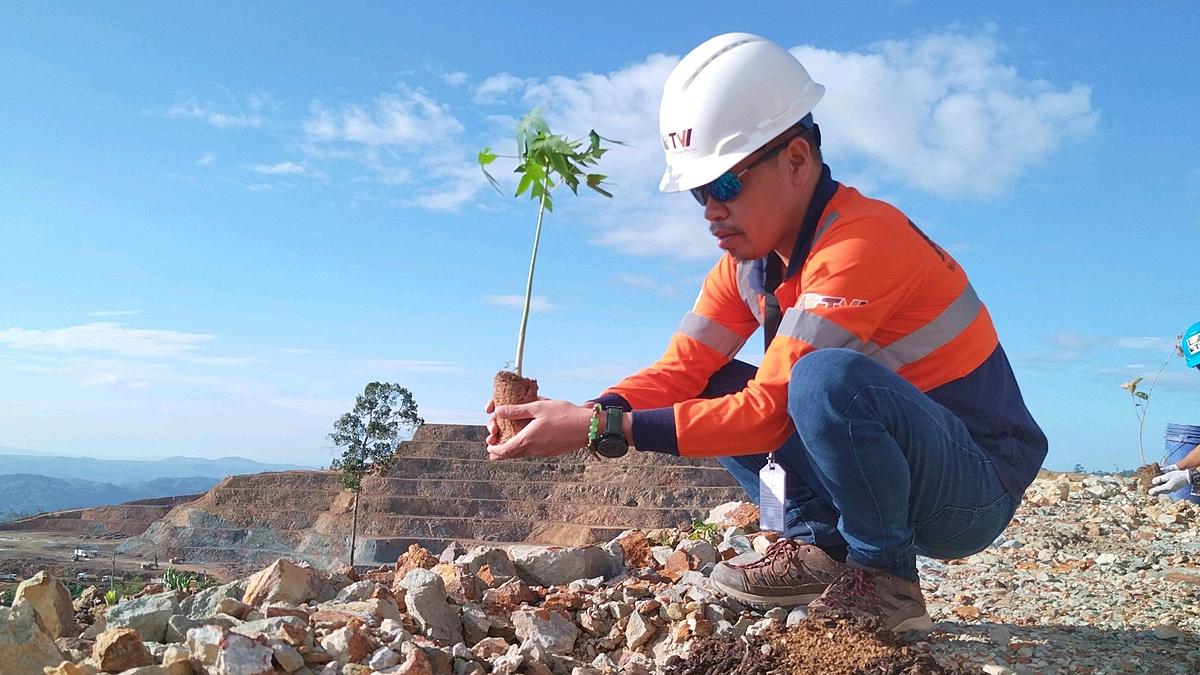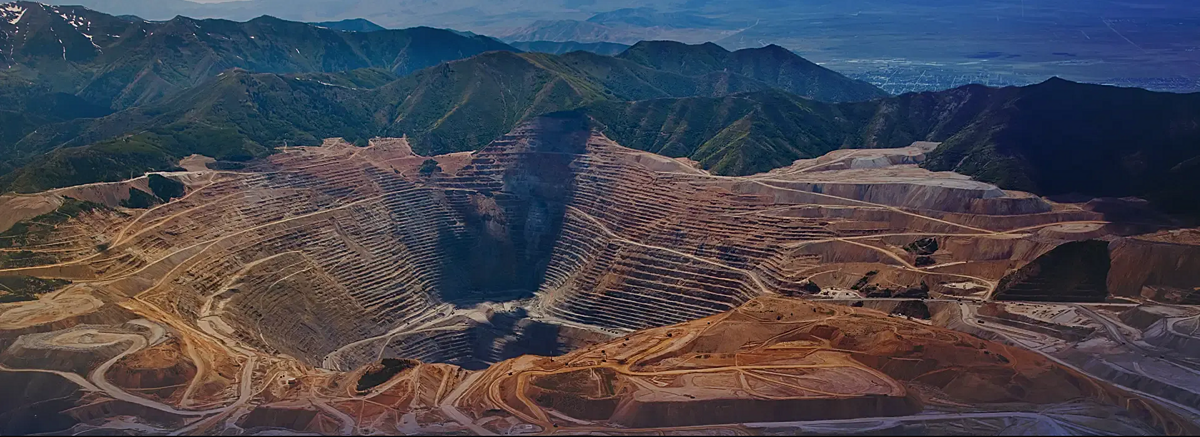When President Rodrigo Duterte was elected in 2016, he made a complete turn-around in the Philippines’ relation with China. He cultivated friendship with Beijing in contrast to former President Benigno Aquino's hard-line approach particularly on the South China Sea maritime dispute. In exchange for Duterte’s offer of the olive branch, he was able to secure China’s commitments in the form of official development assistance (“ODA”) and private investments to his infrastructure projects under his Build Build Build (“BBB”) initiative.
Duterte was also able to create a Chinese market for the country’s fruit exports and lift China’s travel ban paving the way for the influx of Chinese tourists. Chinese foreign direct investments (“FDI”) were also sought for real estate projects and Philippine offshore gaming operations (“POGO”). Developments in the Philippines bode well for China’s belt and road initiative (“BRI”), an ambitious global development strategy involving infrastructure development and investments spanning 152 countries to improve connectivity and cooperation on a transcontinental scale.
The rosy relations with China did not sit well with some sectors however. Manila's arbitration victory against China over the maritime dispute was set aside. Critics lambast Chinese development assistance as nothing more than massive foreign borrowings, which the country pays back at usurious contract rates at the expense of giving away sovereignty but creating jobs for Chinese workers. At the same time, China’s aggressive stance in the South China Sea, now considered as Asia’s most complex territorial dispute involving land reclamation and militarization, have increased tensions and undermined peace, security and stability in the region.
Investments
Duterte's BBB initiative plans to inject USD160 billion to USD180 billion in new infrastructure improvements during his administration, which saw an infrastructure spending increase from 2.7 percent of gross domestic product (“GDP”) between 2011 and 2015 to 6.3 percent of GDP at the start of 2018. Duterte’s BBB program has a combined price tag of USD171 billion required to complete the 75 projects, half of which is expected to be funded by money from China. Data from the Bangko Sentral ng Pilipinas reveal that FDIs from China more than doubled to USD28.79 million in 2017 from USD10.77 million in 2016. In 2018, Chinese investments have ballooned to USD198.68 million, a whopping 590% increase from 2017.
This means that in under three years, Chinese FDIs already amounted to USD232.24 million, greatly exceeding the inflows in the Arroyo and Aquino administrations combined.
Five Key Areas of Cooperation
1) Policy Coordination:
Beijing and Manila signed a Six-Year Development Program for Trade and Economic Cooperation in March 2017, which aims to gradually harmonize mutual development goals and interests within the BRI framework. Complementing the program is the agreement of the Board of Investments and the Bank of China on the 2017-2019 Investment Priorities Plan for Chinese Companies, which is meant to facilitate business-matching activities and industrial linkages.
2) Infrastructure development and connectivity:
China has pledged $7.34 billion in soft loans or official development assistance and grants for large-scale Philippine infrastructure projects and flagship programs. This amount forms part of $24 billion worth of agreements Beijing committed to President Rodrigo Duterte on his first visit to China in 2016. The basket of loans through official development assistance programs in two tranches ($7.19 billion) includes dam and irrigation, railways, expressways and bridge projects, among others.
3) Trade and investment:
China became the Philippines’ largest trading partner in early 2017, marking an increase of $15.04 billion (16 percent) from 2016. Furthermore, investments approved by the Philippine Economic Zone Authority and the Board of Investments more than tripled for the first three quarters of 2017 to around $40 million (from $10.9 million in 2016). Private Chinese firms are also making headways in penetrating the Philippine consumer market through mobile firms such as Huawei, Xiaomi, Oppo, and Vivo. Even Alibaba Group is making its presence felt in promoting financial inclusion and digital payment services through strategic partnerships with local firms, such as Globe Fintech Innovations Inc. or Mint. Moreover, Alibaba’s Alipay and Tencent’s WeChat Pay have also signed licensing agreements with Asia United Bank, which favorably enables Chinese tourists to drive the growth of cashless payment systems in the Philippines.
4) Financial integration and connectivity:
The Bangko Central ng Pilipinas officially added the renminbi as part of its international reserves. It also approved the Peso-Yuan spot market, which will lower the transaction costs for Philippine and Chinese banks and businesses by reducing reliance on the dollar as the intermediate peg. The issuance of “panda bonds” or renminbi-denominated bonds worth $200 million began, which could pave the way for more access to Chinese assistance in Philippine financial requirements.
5) People–to–people exchanges and connectivity:
China has become the Philippines’ second-largest tourism market. As of November 2017, 14 new flights connect China and the Philippines, and the Philippine Bureau of Immigration initiated a Visa Upon Arrival scheme for Chinese tourists. In the area of media and communications, China Central Television and the Presidential Communications Operations Office have signed an MOU for the rebroadcasting of China Global Television Network programs.
Source: Aaron Rabena, The Complex Interdependence of China’s BRI in the Philippines
According to Trade Secretary Ramon Lopez, of the $24-billion investment and credit line pledges that the Philippine government secured from China, $15 billion worth of investment projects were signed and allocated as follows:
Itemized list of PH projects covered by China’s $15-B investment pledges to Duterte
Source: Amy R. Remo, Philippine Daily Inquirer
Tourism
With the lifting of the travel ban to the Philippines by the Chinese government, 1.26 million Chinese visitors were recorded last year, nearly triple the number in 2015. There is aggressive development of two and three-star hotels in the Manila Bay area and the fringes of the Makati central business district mostly catering to Chinese tourists. Property developer Double Dragon is planning to build more Jinjiang hotels, a chain popular among Chinese tourists and business executives given its brand recall and convenient booking platform.
Double Dragon intends to more than double its room count to about 2,000 by 2020 in the country’s capital and other urban areas. It also helped that the Philippine government implemented the visa-upon-arrival scheme for Chinese nationals. Justice Secretary Menardo I. Guevarra however said that his department and the Bureau of Immigration will tighten up the rules since the scheme was reportedly being abused by overstaying Chinese who ended up working in the Philippines.
Development of Industrial Parks
Memoranda of Understanding between the Philippine and Chinese governments on industrial park development were also signed as Chinese industrial park developers are aware of the rising demand for industrial space in the Philippines given the country’s expanding manufacturing and export base. Among the investment pledges signed worth USD9.5 billion that is seen benefitting the property sector are the following:
USD3.46 billion project with Shanghai GeoHarbour Group that involves land reclamation and development projects;
Development of large tourism projects and electronic industry parks with Zhongfa Group;
Construction of China-Philippines International Techno-Industrial Zone with China National Heavy Machinery Corp; and
Development of infrastructure and construction projects with Haocheng Group.
Philippine Offshore Gaming Operations
Fifty-four (54) POGO licenses offered by the Philippine government that allow companies to set up internet-based casinos for overseas gamblers were bagged by China-linked companies, bringing with them dozens of companies providing information technology support and call center services manned by Mandarin-speaking mainlanders. POGOs have overtaken the Information Technology and Business Process Management (“IT-BPM”) industry in terms of office demand. Demand from Chinese-run firms in the first half of the year already exceeded 2018’s full-year take-up by 37%. In 2018, POGOs took up 229,000 square meters (sq. m.) of office space, while take-up as at June 30 this year was at 315,000 sq. m.
Much of the growth in demand could be attributed to the growing acceptance of POGOs among Philippine landlords. From only three (3) local government units giving Letters of No Objection (“LONO”) to POGOs in 2016, there are now seven (7) cities in Metro Manila issuing this document required by the Philippine Amusement and Gaming Corporation for POGOs to operate in their areas. These cities include Makati, Pasay, Parañaque, Mandaluyong, Las Piñas, Muntinlupa, and recently Quezon City by way of Special Use Permits. To date, Taguig City has yet to issue LONOs to POGOs, but hosts the largest IT-BPM locators in the country and remains to be the preferred district.
Higher demand from offshore gambling firms filled up the slack brought about by the decline in the IT-BPM sector, whose continued development are further dampened with the government-issued moratorium on economic zone proclamations in Metro Manila, as well as looming fears regarding the second package of the Duterte administration’s Comprehensive Tax Reform Program.
POGOs are also driving residential condominium sales especially in the Manila Bay area where office buildings are developed alongside residential towers. The online gaming industry's revenue ballooned to PHP7.35 billion in 2018 from PHP657 million in 2016.
Will the Philippines Fall into a Debt Trap?
Chinese-funded infrastructure development associated with BRI in developing countries particularly in Asia and Africa has been hounded by fears of “debt traps”. Reports have highlighted that these Chinese investment and financing deals have in some cases involved predatory policies of high interest rates and unsustainable payment schemes for projects mostly identified as white elephants. These resulted in the debtor government unable to pay the loan and the project being acquired by the Chinese funder by virtue of debt-for-equity swaps.
The same debt trap scenario has been hounding Chinese ODA in the Philippines with critics comparing China’s interest rates to that of Japan, which supplies a majority of the country’s overseas development aid. Even some officials in government are alarmed at Chinese investments considering their security implications that threatens our sovereignty not only because future debt burdens will result in an “economic invasion” but also at the proliferation of Chinese workers and their access to sensitive strategic geographic areas in our territory.
There has been counter arguments that the Philippines will not fall into a Chinese debt trap. A debt trap usually occurs when debt obligations reach an unsustainable threshold of a country’s GDP creating a high debt-to-GDP ratio. Debt service will eventually lead to low growth because most economic output will be used to cover debt payments.
However, the country’s economic managers maintain that the country possesses economic fundamentals that mitigate against the danger of excessive indebtedness. They noted that while Philippine debt increased, external debt-to-GDP ratio (in percentage) has actually decreased, indicating that less of the country’s GDP has been used for servicing debt. To avoid being debt trapped, Budget Secretary Benjamin Diokno highlighted that the current administration has pushed for a 75:25 debt mix, with the larger bulk falling on local financing.
The government also banks on the successful implementation of the Tax Reform for Acceleration and Inclusion Act to pay off necessary finances related to the BBB plan.
Critics warned that Chinese-funded infrastructure projects might end up like the Hambantota International Port in Sri Lanka that was doomed to fail because the port has seen very low levels of shipping traffic but at a high financing cost. The project was referred to by the New York Times as “one of the most vivid examples of China’s ambitious use of loans and aid to gain influence around the world — and of its willingness to play hardball to collect.”
The government however believes that unlike the Sri Lankan port project, the local transportation projects lined up for Chinese financing generate internal demand and can successfully contribute to economic growth. The Philippine economy relies on domestic consumption, and there is a huge internal demand for transportation services. In addition, government economic managers argue that the BBB initiative taps a diverse range of development lenders making a debt trap and domination by a single lender highly unlikely, citing that more than half of developmental infrastructure projects in the country are funded by the Japanese International Corporation Agency and the Asian Development Bank. The National Economic Development Authority further clarified that the government will make use of an optimal mix of government domestic financing, aid, and private capital in funding infrastructure projects.
Fear of Chinese Workers
Another major cause of concern is the influx of Chinese workers brought about by offshore gaming operations and infrastructure construction activities. The number of Chinese nationals arriving in the country has nearly tripled since 2016. POGO workers filled hotel rooms and office towers previously intended for IT-BPM operations, snapped up residential condominiums and boosted retail sales. Despite the economic benefits, there has been a mounting opposition from locals who fear Chinese workers are taking away jobs from Filipinos and evading taxes aside from their unruly behavior.
From 2016 to 2018, around 335,800 working visas and special work permits were issued to Chinese, representing over half the total number of permits issued to foreigners. More than half of them were for online gaming-related jobs, and the rest for sectors including construction, information, and communications. However many Chinese tourists who entered the Philippines reportedly ended up overstaying to find jobs while others bribed immigration officials to get working visas.
To address the situation, the labor, finance and trade secretaries have joined the heads of the tax, immigration and gaming bureaus to form an "interagency committee on the influx of foreign nationals.” The committee seeks to stop tax avoidance by Chinese workers.
Finance Secretary Carlos Dominguez estimated that the Bureau of Internal Revenue could collect at least PHP2 billion per month from an estimated 100,000 offshore gaming workers.
The government is also planning to transfer Chinese POGO workers to “self-contained” communities or hubs that will limit their interaction with Filipinos. While clamping down on Chinese workers could appease local critics, the government was cautioned that the move would mar relations with China as harsh treatment of foreign workers could backfire on the roughly 30,000 Filipinos working in China excluding the more than 200,000 workers in Macao and Hong Kong.
As the Philippine government embarks to tighten the regulation on POGOs, the Chinese embassy in Manila is asking the Philippines to stop hiring Chinese citizens in casinos and other gaming facilities in its efforts to stop the proliferation of cross-border gambling. China will also crack down on “underground banks” and online payment platforms that provide financial settlements for cross-border gambling, and wipe out domestic network operators and companies that provide technical support for such operations. China blames offshore gaming operations for increased crimes and other social problems in China.
The Controversy Behind the Kaliwa River Dam Project
The Philippine government is seeking funding for a dam project which seeks to address the water crisis brought about by the unexpected demand from the construction industry, shortages in the primary water source, and delays to infrastructure projects designed to bring additional supply onstream. The New Centennial Water Source-Kaliwa Dam Project (“Kaliwa Dam”) comprises a series of three (3) dams in the nearby Sierra Madre mountains, which have been originally planned as a solution to Metro Manila’s water requirements since the Marcos administration.
The Kaliwa Dam will add 2,400 million liters per day (“MLD”) to the existing 4,000 MLD supply that serves the 20 million people in Metro Manila and its surrounding regions.
According to the Metropolitan Waterwork and Sewerage System (“MWSS”), the initial phase is slated to begin with a 60-meter concrete dam at Kaliwa, which straddles the boundary of Rizal and Quezon provinces, a 25-kilometer conveyance tunnel, and two water treatment plants. If built, the Kaliwa Dam will secure Manila’s water supply for the next 10 to 15 years.
The conveyance tunnel, meant to serve the Kaliwa and Laiban dams will have a capacity of 2,400 MLD. The third dam in the series, at Kanan, will dwarf the first two with a potential capacity on its own of 3,720 MLD.
Government officials have come out in support of the Kaliwa project, as the MWSS is working on the Environmental Impact Assessment. The road right of way has been secured while the Department of Public Works and Highways is reviewing the design of the dam. The target date for completion of the project is 2023. China Energy Engineering Corp, the company responsible for building the Three Gorges dam in China, has been contracted for construction utilizing Chinese workers. The Kaliwa Dam will be funded through a loan finance agreement signed on 20 November 2018 by the Export-Import Bank of China and the MWSS. The bank will make available a loan facility of up to USD 211.2 million, equivalent to 85 percent of the contracted cost of the dams, at an interest rate of 2 percent.
Kaliwa Dam has been opposed on grounds it will lead to environmental destruction and the displacement of indigenous peoples in Sierra Madre. Previously, a Japanese contractor, Global Utility Development Corp. (“GUDC”) made an unsolicited bid to finance and build a far less environmentally impactful seven-meter dam at Kaliwa, only to have their proposal rejected by the Philippine government. The project was also criticized for the use of highly concessional ODA financing instead of the Public-Private Partnership (“PPP”) unsolicited proposal of GUDC.
To answer the criticisms, the Department of Finance (“DOF”) explained that the use of ODA financing will benefit Filipino consumers more with cheaper project and financing costs rather than if the project were to go through the PPP route, which would entail additional charges to be passed on to water users by the private proponent to recoup its investments.
The project cost went down from PHP 18.7 billion under a PPP scheme to PHP 12.2 billion under ODA. The DOF further explained that even if fees and interest payments were taken into account in completing the project through ODA, the cost would still be significantly lower at PHP 14.5 billion compared to the estimated price tag of PHP 18.7 billion under a PPP scheme.
The DOF also clarified that the unsolicited proposal of GUDC only involved the construction of the 7-meter high weir, which is just a portion of the whole project. GUDC has been pushing its unsolicited proposal for a mere intake weir as early as 2008, but the government has, since 2013, opted for the construction of a complete dam. Unlike dams, weirs are dependent on the water flowing from the river source, and susceptible to the effects of both droughts and flooding. In contrast, the 60 meter-high Kaliwa Dam can provide adequate water even during low-flow seasons because it can store water. Unlike a weir where water has the possibility to overflow, a dam’s overflow is channeled into a spillway to prevent flooding.
Moreover, the proposed Kaliwa Dam conforms to international safety standards, with its design able to withstand an earthquake of “probable maximum magnitude.”
The loan finance agreement for the Kaliwa Dam, among other loan agreements with China, has also been heavily criticized for containing certain contractual provisions onerous to the Philippine government. The DOF addressed the issues as follows:
There are no collaterals in any of the loan agreements signed by the Philippine government
A waiver of immunity is standard across loan agreements the Philippines has signed, whether explicitly stated or implied via an agreement to arbitral proceedings. A waiver of immunity only allows the Philippines' counterparty in an agreement to take the country to arbitration, in the unlikely event that the Philippines defaults on its loans;
Arbitral rulings are still subject to the Philippine Constitution, court system and public policy; and
The Philippine government is managing its debt responsibly.
US-China Trade War and Geopolitical Risks in the South China Sea
Diplomatic relations between the United States and China are on pins and needles as both countries are currently engaged in a trade war, which may lead to an economic slowdown in China and tilt the world towards a global recession. At the same time, the United States is concerned by reports of China's actions in the disputed waters of the South China Sea involving its interference with Vietnamese oil and gas drilling activities and a reported Chinese vessel colliding with a Philippine fishing trawler in the Reed Bank area. US State Department spokesperson Morgan Ortagus said in a statement that China's "repeated provocative actions aimed at the offshore oil and gas development of other claimant states threaten regional energy security and undermine the free and open Indo-Pacific energy market.” Chinese territorial claims over the South China Sea based on its nine-dash line boundary is its justification for its large-scale land reclamation activities on seven reefs (Fiery Cross Reef, Johnson South Reef, Cuarteron Reef, Gaven Reef, Hughes Reef, Mischief Reef and Subi Reef) in the disputed waters that are fully-equipped with military runways and outposts.
In June, the People’s Liberation Army (“PLA”) Rocket Force conducted anti-ship ballistic missile tests in a disputed part of the South China Sea. Chinese state media also reported that pilots of the PLA Air Force tested the sea warfare capabilities of their advanced fighter jets over the South China Sea. Tensions in the area further increased as the US Navy carried out what Washington calls “freedom of navigation exercises” close to islands and reefs Beijing claims as its own.
While analysts believe that President Donald Trump appeared uninterested in Southeast Asia compared with his predecessor Barack Obama whose “pivot to Asia”, meant to be a centerpiece of his foreign-policy legacy, was nonetheless never fully realized. The Trump administration however has increased the number of military operations in the South China Sea in its efforts to push back on China’s combativeness in the contested waters.
The weapon of choice for the US is trade. The Trump administration criticizing the World Trade Organization regime and China’s trade practices, vowed to take action to ensure fair and equal market access for US products. Trump then investigated and issued tariffs targeting China’s industrial policies as a response to the alleged unfair trade practices of China over the years including theft of U.S. intellectual property. China responded by imposing tariffs on certain products it imports from America. Following China’s devaluation of the yuan after the Trump administration threatened to impose additional tariffs on just about every Chinese export, the US labeled China a "currency manipulator.” China has also stopped buying American crops and was reportedly considering more aggressive retaliatory options, including cutting off key parts of the global supply chain in rare earth minerals and flooding the financial system with US Treasury Bills.
At home, while some of Philippine business group’s members are feeling pain from the prolonged trade battle, their greater worry is that the conflict will spill over into the volatile South China Sea where tensions are already high because of the maritime dispute between China and the Philippines. Existing companies are more concerned about keeping the sea lanes open and how it plays out in the context of Philippine politics. Though the Philippine government filed and won a case against China’s “nine-dash line” claims in an international tribunal in 2016, it still is reluctant to invoke the arbitral ruling as Duterte temporarily set it aside in pursuit of warmer economic relations with China. Nevertheless, he is expected to make the Hague ruling a central component of his administration’s foreign policy. Duterte said that he would not accept China’s claim on the whole of the South China Sea and would push for the completion of a Code of Conduct in the area. How this will fan out with existing Philippine-China trade relations remains to be seen.
Joint development of the petroleum resources within the disputed of the West Philippine Sea is also on top of President Duterte’s agenda as he reportedly amenable to the 60-40 joint exploration deal with China in the West Philippine Sea. The ongoing dispute has certainly dampen the interest in petroleum exploration even as the Department of Energy is embarking on another contracting round for petroleum service contracts. In the meantime, in the absence of exploration activities in offshore Northwest Palawan and Reed Bank, there seems to be no viable upstream petroleum resource alternative to replace the near depleting Malampaya Gas field, a vital energy supply for the highly-industrialized Luzon island power grid.
Meanwhile, Philippine military officials and the political opposition expressed grave concerns on the possible strategic maritime and security implications over reported plans of Chinese investors to develop three strategic islands into economic hubs. The islands — Fuga in Cagayan Province and adjacent Grande and Chiquita Islands in Subic Bay, Gambles province — play strategic roles in the country’s national security. Fuga Island is near where the country’s telecommunications cables pass, making it theoretically possible for someone based on this island to tap into these cables. Grande and Chiquita Islands, on the other hand, provide a strategic location to monitor activities in Subic, which is being eyed as a base for the Philippine Navy. There were also reports of Chinese warships passing through Philippine waters and oceanographic survey ships conducting research within the Philippine EEZ without permission from the government.
Clearly, the Duterte administration is balancing the country’s economic interest by de-securitizing its approach to the South China Sea conflict in its cordial relations with China but at the same time recognizing the US as the only superpower in the world and sole defense treaty ally of the Philippines, as manifested in the Philippine National Security Policy 2017-2022. The Philippines will maintain the Visiting Forces Agreement and the Enhanced Defense Cooperation Agreement with the US. At the same time, Defense Secretary Delfin Lorenzana calls for the need to review the reassurance of mutual defense under the 1951 Mutual Defense Treaty with the US.
Conclusion
The BRI has stoked fears that participating countries engaging China in large infrastructure projects and investments exposes these countries to debt risks giving China the legal cover to gain access to resources, forfeit assets, and impinge on sovereignty in pursuit of its geopolitical interests and world dominance. Chinese investments offer much potential to Philippine infrastructure projects ,which is playing catch up to our Asian peers, and failure to tap these would again cause the Philippines to miss the boat. The main concerns are both political and financial. By opening up to Chinese investments, is the Philippines opening itself not only to risks on commercial and operational viability, but most importantly to geopolitical risks and sovereignty issues? To address financial issues for Chinese-funded projects, government regulators must conduct thorough risk planning and feasibility studies, and for greater transparency involve the private sector, local government units, and other stakeholders. On the side of China, it must ensure that proposed projects are transparent, commercially viable, and participating Chinese contractors are of good standing and Chinese workers follow Philippine labor and immigration laws. So much is at stake because should these Chinese-funded projects fail, there are risks of legal action and nationalist backlash against the Duterte administration. These will damage China’s BRI program and standing in the international community. It will also not help in mending the reputation of Chinese firms operating abroad which are perceived as exploiters of natural resources and destroyers of the environment particularly in developing countries. More importantly, China must assure that its infrastructure loans will not violate the sovereignty of debtor countries lest it will only give credence to the “Yellow Peril” conspiracy theory that China intends to take over the world.
Fernando “Ronnie” S. Penarroyo specializes in Energy and Resources Law, Project Finance and Business Development. He may be contacted at fspenarroyo@gmail.com for any matters or inquiries in relation to the Philippine resources industry. Feel free to follow Atty. Penarroyo on LinkedIn (https://www.linkedin.com/in/fernando-s-penarroyo-2b8a7312/)
References:
Beltran, Bjorn Biel M., “Offshore Gaming Firms’ Growth Drives Demand for Office Space”, BusinessWorld, 30 July 2019, https://www.bworldonline.com/offshore-gaming-firms-growth-drives-demand-for-office-space/
Camba, Alvin,“Inside Belt and Road 'Debt Trap' Projects in the Philippines”, The Jamestown Foundation’s China Brief, 01 February 2019, https://international.thenewslens.com/article/112937
“China’s ‘One Belt One Road’ to Benefit Philippine Property”, Colliers Radar, 11 April 2018, https://www.colliers.com/en-gb/philippines/about/media/chinas_one_belt_one_road_to_benefit_philippine_property
“China’s One Belt One Road: The Dragon Spreads Its Wings over Asia”, Colliers Radar, 06 March 2018, https://www.colliers.com/-/media/files/apac/asia/colliers-dragon-asia-obor.pdf
Estrada, Darlene V., “China’s Belt and Road Initiative: Implications for the Philippines”, Foreign Service Institute, Vol. V, No. 3, March 2018, http://www.fsi.gov.ph/chinas-belt-and-road-initiative-implications-for-the-philippines/
Green, David, “The Philippines’ China Dam Controversy”, The Diplomat, 27 March 2019, https://thediplomat.com/2019/03/the-philippines-china-dam-controversy/
Katigbak, Jovito Jose P., “Bridging the Infrastructure Investment Gap Through Foreign Aid: A Briefer on Chinese ODA”, Center for International Relations and Strategic Studies of the Foreign Service Institute, Vol. V., No. 11, June 2018, http://www.fsi.gov.ph/bridging-the-infrastructure-investment-gap-through-foreign-aid-a-briefer-on-chinese-oda/
“National Security Policy for Change and Well Being of the Filipino People 2017-2022”, National Security Council, April 2017, http://www.nsc.gov.ph/attachments/article/NSP/NSP-2017-2022.pdf
“ODA Financing on Kaliwa Dam Project to Benefit Consumers with Cheaper Project, Financing Costs”, Department of Finance, 26 March 2019, https://www.dof.gov.ph/index.php/oda-financing-on-kaliwa-dam-project-to-benefit-consumers-with-cheaper-project-financing-costs/
Rabena, Aaron, “The Complex Interdependence of China’s BRI in the Philippines”, Brinknews, 30 October 2018, https://www.brinknews.com/the-complex-interdependence-of-chinas-bri-in-the-philippines/
Remo, Amy R., “Itemized List of PH Projects Covered by China’s $15-B Investment Pledges to Duterte", Philippine Daily Inquirer, October 23, 2016 https://business.inquirer.net/217269/itemized-list-ph-projects-covered-chinas-15-b-investment-pledges-duterte
Salvador, Alma Maria O., “The New Cold War in the US-China Trade Wars: Application to the Philippine Foreign Policy”, Blueboard, http://ateneo.edu/ls/soss/political-science/news/research/‘new-cold-war’-us-china-trade-wars-application-philippine
Uy, Weslene, Rise of Chinese investments in Duterte’s Philippines: Some Consequences, 19 March 2019, https://www.philstar.com/other-sections/news-feature/2019/03/19/1902800/rise-chinese-investments-dutertes-philippines-some-consequences
Venzon, Cliff, “Duterte Under the Gun Over Chinese Influx into Philippines”, Nikkei Asia, 05 March 2019, https://asia.nikkei.com/Spotlight/Asia-Insight/Duterte-under-the-gun-over-Chinese-influx-into-Philippines
Zheng, Sarah, “Risk of US-China Clash in South China Sea Worries Philippine Firms More Than Trade War”, South China Morning Post, 23 Dec. 2018, https://www.scmp.com/news/china/diplomacy/article/2176793/us-china-clash-south-china-sea-not-trade-war-worries

